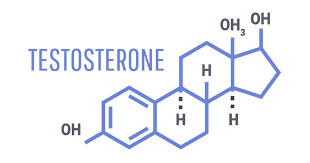Table of Contents
Introduction
Hormones in the body control the organs and the entire body system, from the endocrine system to the body’s temperature. When hormones get out of balance, they can lead to chronic problems. Over the last decade, many of our patients have asked great complex and insightful questions about hormone replacement therapies. We refer patients to skilled and qualified providers specialized in hormone wellness services. To that end, and when appropriate, we advise our patients to refer to our associated medical providers based on their examination. We find that education is the key to asking good questions to our providers. We provide this information as an educational service only. Disclaimer
What Is Hormone Replacement Therapy?
Hormone replacement therapy can help older males replenish testosterone hormone levels. Another thing that hormone replacement therapy can provide is that it can reduce the levels of androgens in the body to prolong the process of prostate cancer while also lowering adrenal gland over-production.
Low T: The Clinical Problem
Hypogonadism affects 30% of men aged 40-79
– A gradual, age-associated decline in serum total testosterone levels begins in men
in their mid-30s and continues at an average rate of 1.6% per year
- Symptoms
– Fatigue / Cognitive function decline
– Decreased libido
– ED
– Depression, irritability, decreased sense of well-being
– Decreased muscle mass / increased body fat
– Decreased bone mineral density
Pregnenolone
- Synthesized directly from cholesterol
– Precursor to all other sex hormones - Levels start to decline around age 30
- Functions to:
– Enhance nerve transmission and memory
– Improve energy and sleep
– Increase stress resistance
– Mood elevation– Reduce pain and inflammation - Deficiency associated with:
– Depression
– Fatigue
– Inability to deal with stress
– Insomnia
– Lack of focus
– Memory decline
Pregnenolone Dosing
- Pregnenolone SR to start at 10mg per day and
titrate up slowly until you reach a blood level of 100
which is optimal - SR form more physiological
- Can cause agitation and anxiety if titrate too fast or if
the dose is high for patient
Progesterone
- Made by the adrenal glands
- Precursor to androstenedione
- Levels start to decline in men around age 60
- Functions to balance estrogen
– Inhibits aromatase and 5-alpha reductase
– Antagonizes stimulatory effects of estrogen on the prostate gland
and lowers PSA
– Stimulates anti-tumor antigen, p53, to prevent prostate cancer
Progesterone Dosing
- In men, you start with 3-5mg topically daily
- Usually added to testosterone/Chrysin cream
topically - Can use capsule form if the patient has sleep
issues. Dose range 5-15mg oral
DHEA
- Made by the adrenal glands
- The precursor to estrogen and testosterone
- Production declines with age
- Protective effect against:
– Cancer, diabetes, obesity, high cholesterol, heart disease, and
autoimmune diseases - Symptoms of deficiency:
– Decreased energy & muscle strength, difficulty dealing with stress,
increase risk of infection, irritability, joint soreness, and weight gain
Actions of DHEA
- Prohormone for sex steroids
- Anti-glucocorticoid
- Immune supporting
- Anti-atherogenic lowers serum triglycerides
- Enhances insulin sensitivity; anti-obesity effect
- Maintains tissue strength and repair, supports bone density
- Neuroprotective; enhances memory
- Promotes a sense of well-being
- Libido enhancing
DHEA Dosing
Replacement linked with an improved libido, mood, erectile function
- Improves neural protection, especially when Cortisol is high
- Men need 25-50mg per day
- SR form is more physiological
- DHEA is a large molecule, and therefore, it is not well absorbed topically
- Side effects include oily skin, hirsutism, acne
- K-DHEA form can be used if concerned for cancer and want to bypass
hormonal byproducts
Androstenedione
- Common precursor of male and female sex hormones
– Converted to testosterone through 17ơ-hydroxysteroid
dehydrogenase
– Converted to estrogen through the aromatase - Found in testes and adrenal glands
- Short half-life
- No reliable studies on benefits
Dihydrotestosterone (DHT)
- Most potent naturally occurring androgen
– 3 times more potent than testosterone - Synthesized from the conversion of testosterone
through 5-alpha reductase - Responsible for formation of male sex-specific
characteristics and development of male genitalia and
prostate
– Low levels can affect sexual function and libido, muscle
tone - Elevated levels can cause:
– Hirsutism
– Male pattern baldness
– BPH
– Prostate cancer - 25% secreted by testes, 75% from
bioconversion from T in liver, kidney, muscle,
prostate, and skin - The blood concentration of DHT is 10% that of T but at least twice as potent due to increased affinity
for androgen receptor; cannot be aromatized to
estrogen - Produced in utero is responsible for the development
of male sex characteristics - A primary contributing factor in androgenic
alopecia, benign prostatic hypertrophy, hirsutism
in women
Estradiol/Estrone
- Made in muscle, skin, and adipose tissue
- Adequate levels protect against bone fractures,
and maintain cognitive function - Excess associated with:
– Gynecomastia
– Decreased sex drive/erectile dysfunction
– The doubled risk of stroke
– Higher rates of heart attack, peripheral artery disease,
and coronary atherosclerosis
– Insulin resistance
– Rheumatoid arthritis
– BPH
– Prostate cancer
Testosterone
Testosterone is the principal male hormone in males that are important for normal males’ sexual development and functions.
- Principal male hormone
- Anabolic steroid produced from cholesterol
- Primarily secreted in the testes and small amounts secreted
from the adrenal glands - Functions:
– Anabolic effects: increased muscle mass, bone density, and
bone maturation
– Androgenic effects: development of sex organs, deepening
of voice, hair growth
Factors Contributing to Testosterone Decline
Many factors can contribute to the decline in male testosterone levels in the body.
- AGE
- Diet and insulin resistance
- Stress levels/cortisol demand
- Toxin exposure
- Depression
- Insomnia
- Decreased muscle mass and strength
- Osteoporosis
- Decreased hair density
- Erectile dysfunction
Male Diminished Libido
- Low Bioavailable Testosterone
- Age-Related Testosterone Decline
– (Leydig Cell Dies Every 4 Seconds) - Obesity – Lowers Testosterone
- Beta-Blockers, Statins, NSAIDs, SSRIs
- High SHBG
– Excess Prolactin - Inhibits Dopamine Release
- Responsible for the Refractory Period
- Age-Related Testosterone Decline
Andropause Contributes to Many Diseases
- Diabetes/Metabolic Syndrome
- Brain (Dementia, Alzheimer’s)
- Heart (MIbs)
- Frailty Syndrome/Sarcopenia
- Bone (Osteoporosis)
- Inflammation
Testosterone Decline
- Testosterone declines with age, beginning in the
early 30bs - By age 40, levels naturally decline by >1% per
year - Testosterone production declines due to:
– Increasing SHBG
– Decreasing LH
– Decreased Leydig cell activity - During the time between 25 to 75 years old:
– 30% decrease in Total Testosterone
– 50% decrease in Bioavailable Testosterone - Half of the healthy men between the ages of 50-70 years will
have a bioavailable testosterone level below the lowest
level was seen in healthy men who are 20-40 years of age.
TD and Metabolic Syndrome
When the testosterone hormone levels are low in a male’s body, it can also cause the body to develop metabolic syndrome.
- The increased risk of insulin resistance and
metabolic syndrome is not due to changes in SHBG as the
inverse relationship with low testosterone persists when
looking at free T - Weight loss improves levels of both free and
total T proportionate to the amount of weight
loss - TD is associated with weight gain; weight loss
improves T levels - ADT is associated with increased BMI and
decreased lean body mass (compared to men
who had surgery and no ADT for prostate cancer)
Things That Can Increase Insulin
- High carbohydrate diet
- Increased stress
- Decreased estrogens
- Increased testosterone
- Insomnia
- Increased DHEA
- Decreased thyroid hormone
- Excessive progesterone
- Lack of exercise
- High chronic stress causes low DHEA and low testosterone
- Cortisol will act as an anti-testosterone in the body
Conclusion
All in all, the effects of a healthy male’s hormone levels can be affected when the body is not taken care of or due to natural causes. Low testosterone levels can cause prolonged effects like metabolic syndrome and insulin resistance. By combining a healthy diet and regular exercise can help the body achieve its overall wellness.
Disclaimer
Professional Scope of Practice *
The information herein on "The Latest Guidelines: Male Hormones | Part 1" is not intended to replace a one-on-one relationship with a qualified health care professional or licensed physician and is not medical advice. We encourage you to make healthcare decisions based on your research and partnership with a qualified healthcare professional.
Blog Information & Scope Discussions
Welcome to El Paso's Premier Wellness and Injury Care Clinic & Wellness Blog, where Dr. Alex Jimenez, DC, FNP-C, a Multi-State board-certified Family Practice Nurse Practitioner (FNP-BC) and Chiropractor (DC), presents insights on how our multidisciplinary team is dedicated to holistic healing and personalized care. Our practice aligns with evidence-based treatment protocols inspired by integrative medicine principles, similar to those found on this site and our family practice-based chiromed.com site, focusing on restoring health naturally for patients of all ages.
Our areas of multidisciplinary practice include Wellness & Nutrition, Chronic Pain, Personal Injury, Auto Accident Care, Work Injuries, Back Injury, Low Back Pain, Neck Pain, Migraine Headaches, Sports Injuries, Severe Sciatica, Scoliosis, Complex Herniated Discs, Fibromyalgia, Chronic Pain, Complex Injuries, Stress Management, Functional Medicine Treatments, and in-scope care protocols.
Our information scope is multidisciplinary, focusing on musculoskeletal and physical medicine, wellness, contributing etiological viscerosomatic disturbances within clinical presentations, associated somato-visceral reflex clinical dynamics, subluxation complexes, sensitive health issues, and functional medicine articles, topics, and discussions.
We provide and present clinical collaboration with specialists from various disciplines. Each specialist is governed by their professional scope of practice and their jurisdiction of licensure. We use functional health & wellness protocols to treat and support care for musculoskeletal injuries or disorders.
Our videos, posts, topics, and insights address clinical matters and issues that are directly or indirectly related to our clinical scope of practice.
Our office has made a reasonable effort to provide supportive citations and has identified relevant research studies that support our posts. We provide copies of supporting research studies upon request to regulatory boards and the public.
We understand that we cover matters that require an additional explanation of how they may assist in a particular care plan or treatment protocol; therefore, to discuss the subject matter above further, please feel free to ask Dr. Alex Jimenez, DC, APRN, FNP-BC, or contact us at 915-850-0900.
We are here to help you and your family.
Blessings
Dr. Alex Jimenez DC, MSACP, APRN, FNP-BC*, CCST, IFMCP, CFMP, ATN
email: coach@elpasofunctionalmedicine.com
Multidisciplinary Licensing & Board Certifications:
Licensed as a Doctor of Chiropractic (DC) in Texas & New Mexico*
Texas DC License #: TX5807, Verified: TX5807
New Mexico DC License #: NM-DC2182, Verified: NM-DC2182
Licensed as a Multi-State Advanced Practice Registered Nurse (APRN*) in Texas & Multistate
Multistate Compact RN License by Endorsement (42 States)
Texas APRN License #: 1191402, Verified: 1191402 *
Florida APRN License #: 11043890, Verified: APRN11043890 *
* Prescriptive Authority Authorized
ANCC FNP-BC: Board Certified Nurse Practitioner*
Compact Status: Multi-State License: Authorized to Practice in 40 States*
Graduate with Honors: ICHS: MSN-FNP (Family Nurse Practitioner Program)
Degree Granted. Master's in Family Practice MSN Diploma (Cum Laude)
Dr. Alex Jimenez, DC, APRN, FNP-BC*, CFMP, IFMCP, ATN, CCST
My Digital Business Card
RN: Registered Nurse
APRNP: Advanced Practice Registered Nurse
FNP: Family Practice Specialization
DC: Doctor of Chiropractic
CFMP: Certified Functional Medicine Provider
IFMCP: Institute of Functional Medicine
CCST: Certified Chiropractic Spinal Trauma
ATN: Advanced Translational Neutrogenomics















